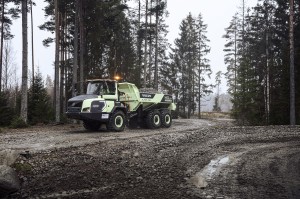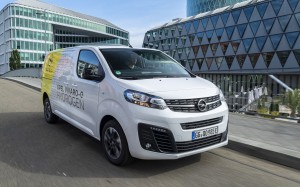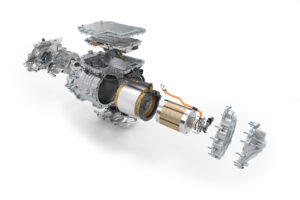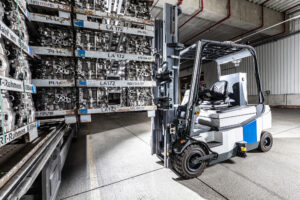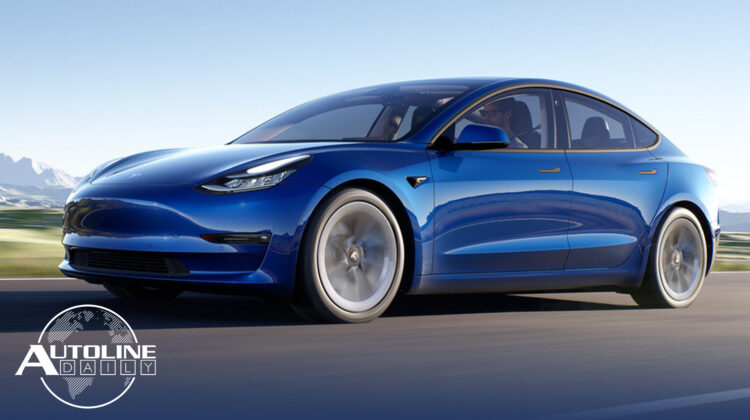
Listen to “AD #3349 – Chinese Leadership Doesn’t Trust Tesla; Car Color Affects Depreciation; Lamborghini Helps Ukrainian Supplier” on Spreaker.
Follow us on social media:
Runtime: 10:37
0:08 Chinese Leadership Doesn’t Trust Tesla
1:06 Expensive EVs Threaten EV Revolution
2:20 Entry Level EVs Need to Sell Well
4:11 Car Color Affects Depreciation
5:16 Volvo Truck Pushes Forward with Fuel Cells
6:06 Volvo’s FCEV Rock Hauler
6:37 Opel Jumps into Fuel Cell Segment
7:54 Bridgestone & Dow Develop Run Flat Tire
8:25 Lamborghini Helps Ukrainian Supplier
9:06 BMW Invests In E-Drive Manufacturing…
9:30 …And Autonomous Forklifts
Visit our sponsors to thank them for their support of Autoline Daily: Bridgestone, Intrepid Control Systems, MEDC and Schaeffler.
This is Autoline Daily, the show dedicated to enthusiasts of the global automotive industry.
CHINESE LEADERSHIP DOESN’T TRUST TESLA
China is worried about Tesla’s cars spying on its top political leaders. Starting on July 1st, Tesla’s will be barred from entering a city near Beijing for two months. No reason was given other than it concerned “national affairs.” Government officials will be gathering in the city for a meeting to discuss policy. Several months ago, Tesla cars were banned from driving on certain roads in the city of Chengdu while Chinese President Xi Jinping was visiting the city. And last year, the Chinese military barred Tesla vehicles from entering sites because it was concerned their cameras were spying on them, which Elon Musk denied was happening. Tesla isn’t the only automaker that has cameras in its cars, so it’s a strong message from Chinese leadership that it really doesn’t trust the American company.
EXPENSIVE EVs THREATEN EV REVOLUTION
Prices for electric cars are going up sharply as automakers try to offset soaring prices for the raw materials needed to make batteries. Whereas the average price of a new car in the US market is $46,000, the average price of an electric is $61,000, according to Edmunds.com, but not including Tesla. Some automakers have raised prices significantly. Tesla’s Model Y is now 65% more expensive than it was a year ago, according to Reuters. In early 2021, you could order a Model Y for $39,490. Now the cheapest one is $65,990. GM raised the prices of the Hummer by $6,250. Rivian already raised its prices by $10,000 to $12,000. Analysts warn this is pricing most consumers out of the EV market and threatens the adoption of electric cars. Two-thirds of new car buyers cannot afford a car that costs $61,000, and most of them will continue to buy vehicles with internal combustion engines.
ENTRY LEVEL EVs NEED TO SELL WELL
But there are affordable EVs available. GM just cut the price of the Bolt and Bolt EUV by $6,000, which means the base price is now about $26,600. GM is also coming out with an electric Chevrolet Equinox that will be priced at $30,000. And a base Nissan Leaf, when the federal tax credit is factored in, is below $20,000, though that hasn’t done much for sales. In China, Honda just unveiled the e:NP1 SUV that starts at $26,000. It comes standard with a 200-horsepower electric motor and a 53.6 kWh battery pack that delivers about 260 miles of range. We’ll have to keep a close watch on how consumers react to these cars, because if entry level EVs don’t sell well, automakers will not be able to get the scale they need for a true EV revolution.
CAR COLOR AFFECTS DEPRECIATION
Black, white and silver might be the most popular colors for passenger vehicles, but they actually lose their value faster than vehicles in a brighter hue. iSeeCars says colors like yellow, orange and purple hold their value better. In fact, it says a yellow vehicle will lose only 4.5% of its value over a 3-year period, compared to the worst color, brown, which loses 17.8%. Or if you want to throw a dollar figure on it, a yellow vehicle is worth a little more than $3,000 less than the MSRP, while brown loses over $7,600. There’s likely a couple of factors at play here. Bright colors are less common and that limited supply keeps prices up. We also think the type of vehicle plays a role. Bright colors are more common on sports cars and they’re also likely to hold their value better. But it’s a completely different story for pickup trucks. The blander colors tend to depreciate less.
VOLVO TRUCK PUSHES FORWARD WITH FUEL CELLS
Automakers see a lot of potential for fuel cells in commercial applications. Volvo started testing two large vehicles that are powered by hydrogen. The first is a big Class 8 truck that features a battery pack and two fuel cells supplied by cellcentric, a joint venture between Volvo and Daimler Truck. The fuel cells are capable of generating 300 kW of onboard electricity and will help provide an estimated range of up to 1,000 kilometers or 621 miles. Volvo says customer trials will start in a few years, but it probably won’t start selling them until the end of the decade. Part of the reason it’s going to take so long is because the infrastructure still needs to be built up. Right now, there’s not a lot of places to go to fill up with a tank of hydrogen.
VOLVO’S FCEV ROCK HAULER
Even so, Volvo is also testing a prototype articulated hauler, or those huge dump trucks you see on construction sites, that runs on hydrogen. It holds 12 kilograms of hydrogen, which takes about 7.5 minutes to fill, and that’s enough for the truck to operate for about 4 hours. Just for comparison, a passenger vehicle, like the Toyota Mirai, holds 5 kilograms of hydrogen. But this new truck is all about testing alternatives to battery electric and diesel.
OPEL JUMPS INTO FUEL CELL SEGMENT
And it doesn’t stop there. Opel is launching the fuel cell version of its Vivaro van. Since this van comes in a number of powertrain options, the fuel cell is located where the engine would normally be, the hydrogen tanks with a capacity of 4.4 kilograms replace the underfloor battery pack in electric versions and a small, 10.5 kWh, battery, which can be charged separately, is added under the front seats. Combined the system provides up to 400 kilometers or about 250 miles of range based on the WLTP test cycle. It also boasts a payload and towing capacity of 1,000 kilograms.
BRIDGESTONE & DOW DEVELOP RUN FLAT TIRE
Bridgestone and Dow developed new tire sealant technology that is able to self-seal a tire if it gets punctured. Current sealants are insanely hard to remove from a tire but Bridgestone and Dow’s sealant, called B-SEALS, is silicon based and easier to get out. It’s also recyclable and more environmentally friendly. Nearly one-third of new cars sold in the U.S. aren’t equipped with a spare tire, so demand for technology like this is only expected to grow in the future.
LAMBORGHINI HELPS UKRAINIAN SUPPLIER
Lamborghini has been directly impacted by Russia’s invasion of Ukraine because Lambo gets the wiring harnesses for the Huracan from western Ukraine. And production of those harnesses gets interrupted when workers have to run into bomb shelters. But instead of resourcing those harnesses to other suppliers, Lamborghini adopted a dual production strategy, where its supplier Leoni is duplicating that work outside of the war zone, though Lambo is deliberately vague as to where that may be. Lamborghini’s head of purchasing, Silvano Michieli, says they want to stick with their existing suppliers who have sacrificed so much to keep production going.
BMW INVESTS IN E-DRIVE MANUFACTURING…
BMW is converting one of its engine plants to make EV components. The automaker’s factory in Steyr, Austria will produce 600,000 e-drives annually starting in 2025. The site will also develop the e-drives. The move is part of a $1 billion investment through 2030 BMW is making in e-drives.
…AND AUTONOMOUS FORKLIFTS
And speaking of BMW and manufacturing, the automaker is testing self-driving forklifts at one of its supply centers. The forklifts are equipped with cameras to help them maneuver but they’re not installed with processors or hardware to determine where to go. Instead, the calculations are performed by a data-cloud using 5G technology, which allows for real-time connectivity between the machine and equipment. The autonomous forklifts are being used to load and unload trucks at the plant. The goal of the project is to help improve BMW’s logistic system.
But that brings us to the end of today’s show. Thanks for tuning in.
Thanks to our partner for embedding Autoline Daily on its website: WardsAuto.com
Seamus and Sean McElroy cover the latest news in the automotive industry for Autoline Daily.






